-
 4936 Hits
4936 Hits
-
 74.97% Score
74.97% Score
-
 6 Votes
6 Votes
|
|
Route |
|---|---|
|
|
9.54658°S / 77.32178°W |
|
|
Mountaineering, Ice Climbing |
|
|
Winter |
|
|
A long day |
|
|
PD+ - 7 hours from the BC |
|
|
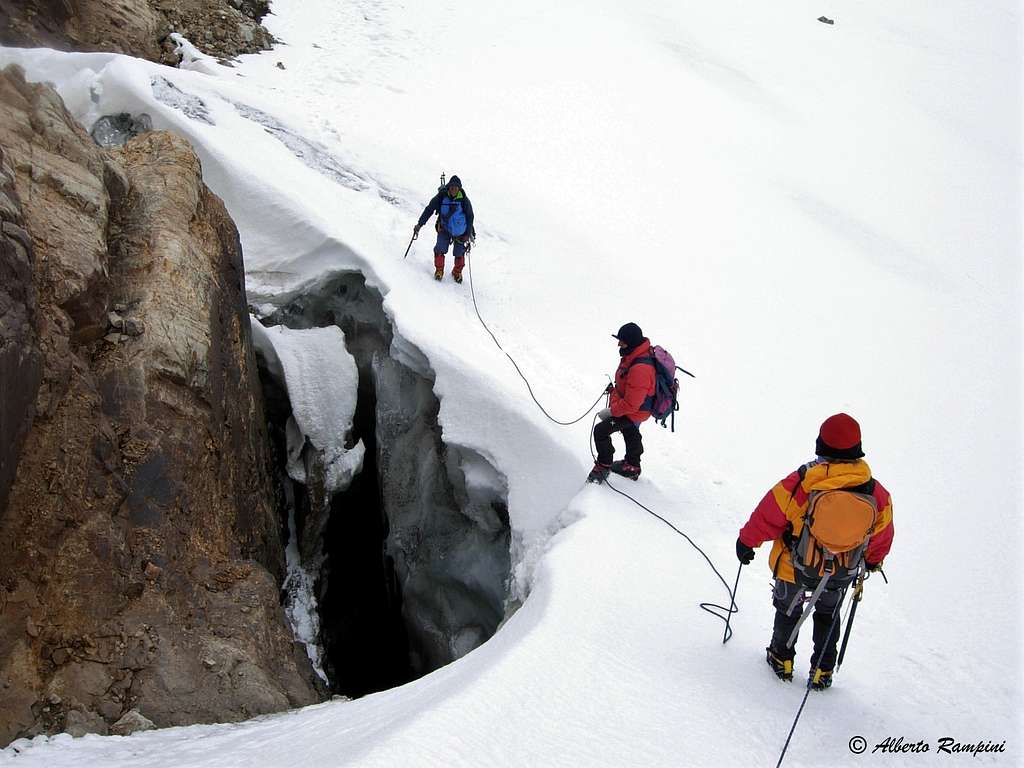
Overview
Maparaju 5326 m is a small fine "nevado" belonging to the Chinchey Massif, located in the South-Eastern sector of the Cordillera Blanca, near the most famous and celebrated Nevado Cayesh. It has always been regarded as one of the easiest mountains to climb in the Cordillera Blanca. The ascent to this mountain is now considered mid-difficult despite in the past it had always been classified as easy. In fact actually the standard route to summit Maparaju is not so easy and banal as stated. The reason of the discrepancy in the evaluation of this climb is that in recent times it's more and more frequent the presence of dark ice and penitentes. There are a couple of steep slopes to overcome and it is certainly advisable to bring some ice screws and pickets.
Maparaju is located at the head of the Quebrada Cayesh ("quebrada" means "valley") and it's ascent is an excellent way to acclimatize before climbing other highest or hardest peaks in the Cordillera Blanca. The entrance to this valley takes place through the Quebrada Quilcayhuanca, which can be accessed from the small hamlet of Pitec 3850 m., just above and East of Huaraz. The summit offers really breathtaking views to various surrounding mountains, such as the Huantsan, the beautiful Cayesh, Tumarinaraju, San Juan, Andavite and Ranrapalca.
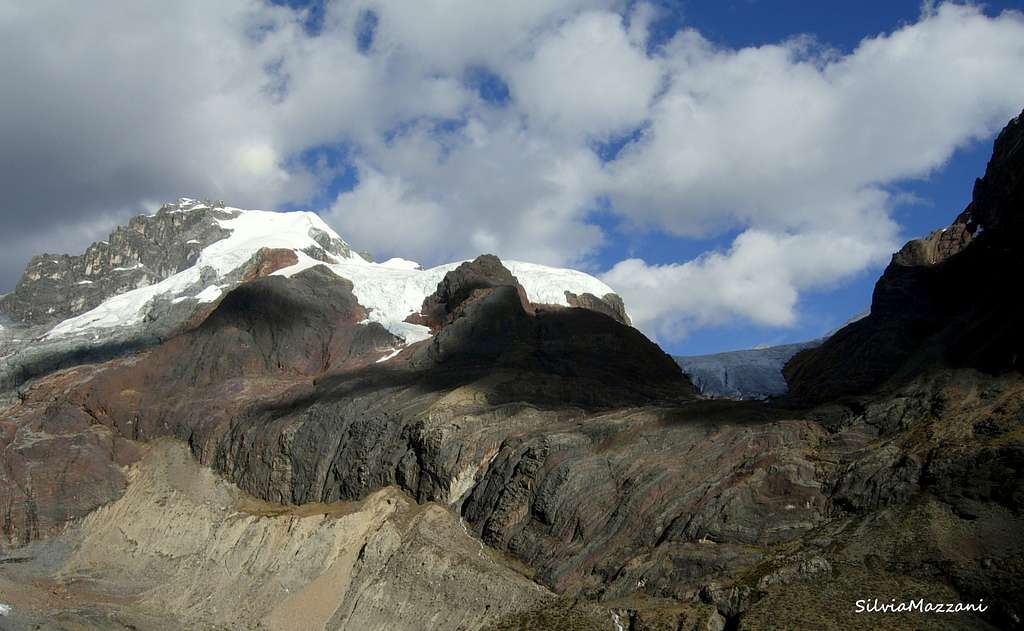
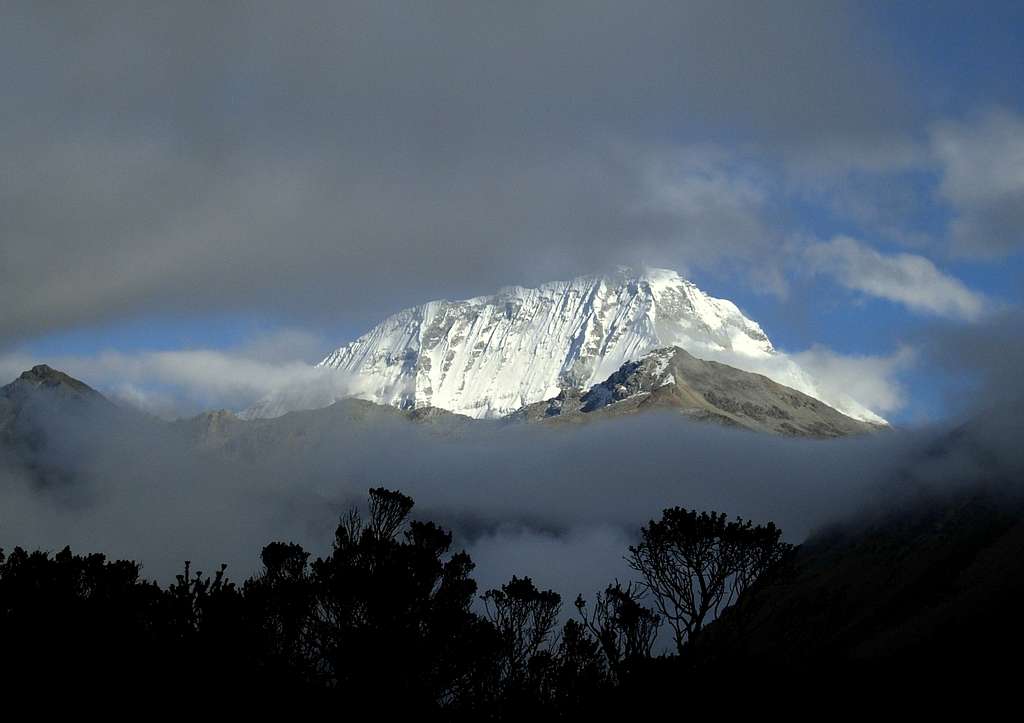
Getting there
Getting to Lima
There are different flights getting to the Aeropuerto Internacional "Jorge Chavez" in Lima, both from Europe and North America, obviously many more from South America. The airport is situated in Callao (about 12 km West to downtown). From there, the bus to Huaraz, the main logistical center for the Cordillera Blanca, takes about 7 hours.
Getting to Huaraz
Huaraz, the capital of the Ancash district and Cordillera Blanca, is a lively and bustling city located about 3000 meters above sea level, which offers several opportunities for accommodation and food, and also easily the possibility to arrange on-site transportation and trekking for people who haven't previously booked any service. Sometimes there are flights joining Lima and Huaraz, but nor regularly. The best way to reach Huaraz is at moment a 6-8 hours trip by bus or private minibus (if you're travelling with a group or an organized expedition). Currently comfortable coaches provide a good transportation from Lima to Huaraz. There are six different bus companies; the best ones are Cruz del Sur, Movil Tours and Ancash Express.
Getting to Pitec
The settlement of Pitec 3850 m is the starting point for the trail to the Maparaju Base Camp. We leave the city of Huaraz to reach Pitec across the villages of Unchus and Llupa. In Pitec there are the headquarters of the Parque Nacional Huascaran where it is necessary to register. Remember to announce your arrival and organize for the opening of the large iron gate closing the access to the Quebrada Quilacayuanca.
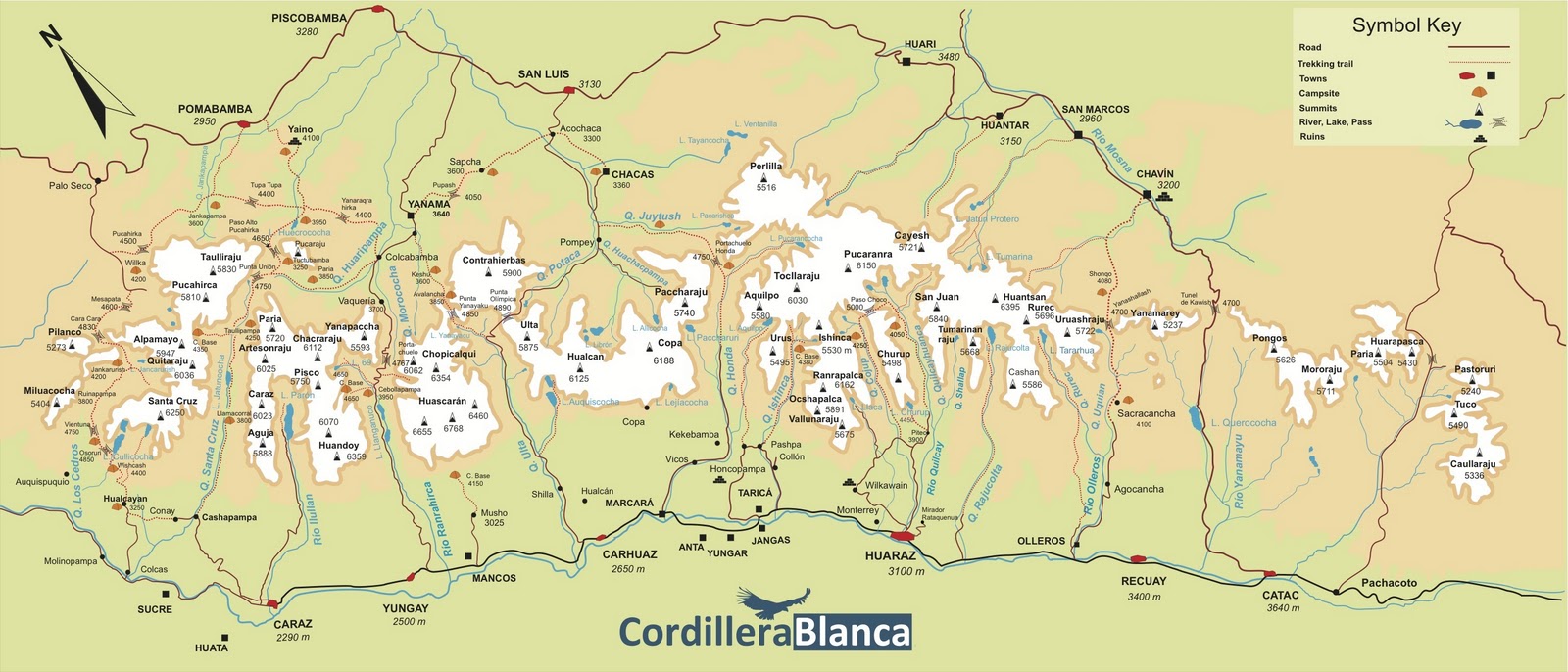
Quebrada Quilcayhuanca trail description

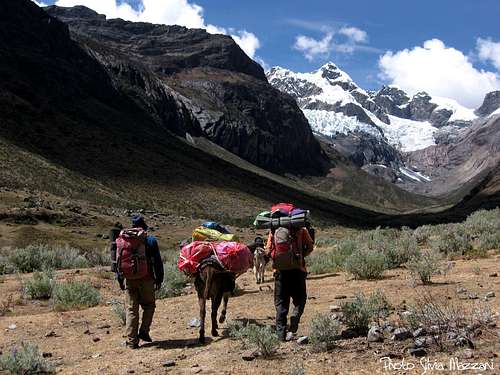
In Pitec there is the headquarter of the Parque Nacional Huascaran, where it is necessary to register. We will sign the Park register and meet our arrieros with their donkeys. Once past the gate, you enter the wide valley that rises very gently. The trace - not always obvious - keps the right orographic side of the "quebrada". Pass under a beautiful granite tower a few minutes from the start. After 2.30 hours from the start we arrive under the Chopiraju Oeste. Here the valley forks: the Quebrada Quilcayhuanca continues on the left and the Quebrada Cayesh opens on the right. A small bridge allows us to cross the stream and proceed on the right entering the Quebrada Cayesh. We continue to walk up this valley, a little closer than the previous one, but still sunny. After about 4 hours from the start we arrive in a wide plain at the head of the valley, an absolutely ideal place to put the Base Camp.
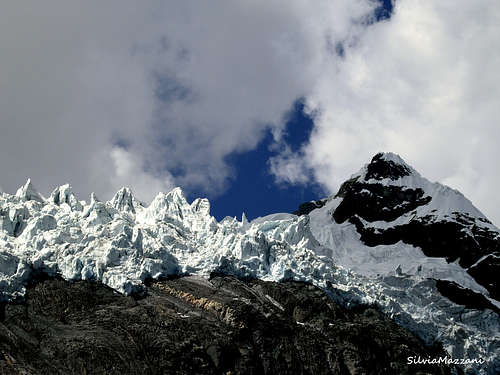
The place is beautiful, enclosed by a barrier of reddish rocks, above which is a magnificent suspended

serac. Beyond the serac a little to the left it stands the Nevado Cayesh, one of the myths of the Cordillera Blanca due to the extreme difficulty of its routes. Further to the right there is the beautiful Milpocraju and finally to the right the Nevado Maparaju to close the valley. On the opposite side, the Ranrapalca appears farther away, while the three Chopiraju aka Andavite rise on the orographic right side of the valley.
Route Description
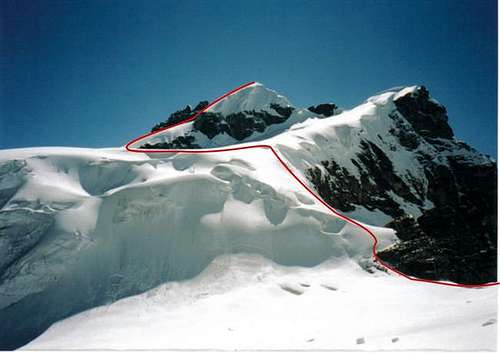
Above the glacier it opens the Abra Villon Col, a col located between San Juan and Maparaju, an ancient passage between the East and West sides of the Cordillera Blanca. Before reaching this col After having rope-up, enter the glacier heading towards Maparaju just clearly visible from here. The flat glacier (perhaps even slightly downhill) leads to the base of a steep, often icy slope situated on the left of a spur of reddish rocks. At the end of this steep slope it follows an almost flat stretch heading towards a rocky triangle.

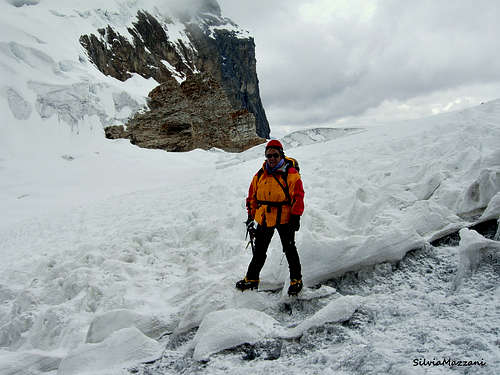
We skirt it on the left along a new steep snow slope, which can possibly be avoided by going further down. To the left we begin to climb the steep summit slope directly crossing three crevasses. The slope leads to the summit ridge on the right of the culminating point, which is reached with a short traverse to the left on the ridge.To take the left pack animal road that raises until Opens Villón, the col located between San Juan and Maparaju. Before arriving at the col, to cross the glacier more or less horizontally in Northeast direction thus to reach the slopes the Northwest of the Maparaju that we will overcome until the top.
Also it can be gone until the Southwestern edge and be followed until the summit, although drawing for some difficulties. From the top unfortunately we cannot contemplate the fantastic needle of the Cayesh with its impressive profile due to the thick fog.
Descent: reversing the same route
Essential Gear
Technical equipment: Axe, Crampons, Rope, glacier gear, trek poles, two ice-screw, pickets.
There are numerous agencies that rent or sell material, although this one usually is very spoiled. It is recommended to take the own one. The clothes are the same ones that in the Alps in winter, safe for feet and hands, that there are to protect better of the cold. The gas cylinders are very difficult to find and usually are expensive. It agrees to use gasoline small furnace, the white benzina is easing in ferreterias of Huaraz (Raymondi Avenue).
It is necessary to count on a sistem to purify the water. We will find a great variety of foods in the markets of Huaraz. The agencies usually sell liofilizado food packages lazy by other expeditions.
Red Tape
The Quebrada Quilcayuanca is closed by an iron gate. If you are planning to climb the mountain without the help of an agency, you will have to organize the opening of the gate.
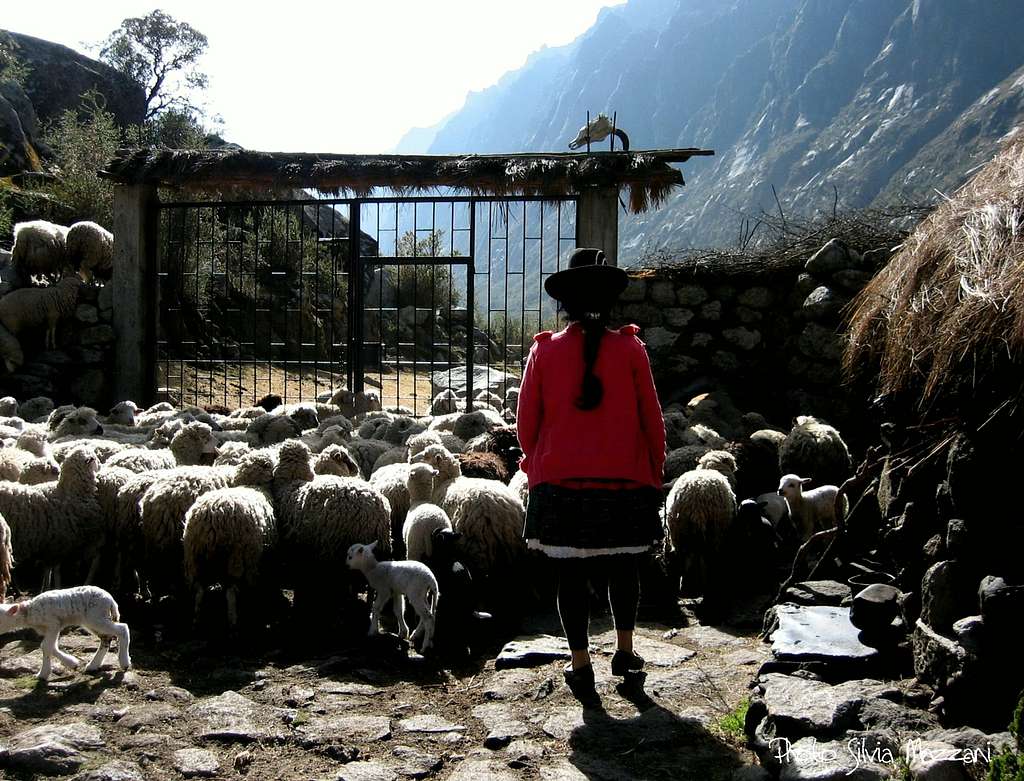
Maparaju and the entire Cordillera Blanca are located within Parque Nacional Huascaràn, one of most spectacular high mountain area in Perù, established in 1975 and acknowledged as an Unesco World Natural Heritage in 1985. Unesco Link here: Unesco info.
The Huascaràn National Park is administered by the Instituto Nacional de Recursos Naturales (INRENA). An entrance fee is due. In 2011, the fee for the Huascaran National Park was 65 Soles for 21 days. Since 2011, officially nobody is allowed to climb without a Mountain Guide, except for the persons who are members of a Mountaineering Association. In this case, the permit can be obtained at the National Park Office in Huaraz, showing the Alpine Club card.
When to climb
The climate of the Cordillera Blanca is influenced by the dry air coming from the desert zones to the West and by the humid air of the amazonicos forests to the East. The dry season in Cordillera Blanca goes from middle May to the early September, coinciding with the local winter, being the Cordillera Blanca situated in the southern hemisphere. Anyhow, still there is usually too much snow dust in May and June for the ascents, the months of July and August are more indicated. In this period generally there is an alternation of several days of good weather with one or two of bad weather. Even so, the Boy has tendency to disturb this regularity. Usually the rainy season starts in early September.
Accomodation
Wide choice of options for accomodation and meal in Huaraz.
Meteo
Weather Forecasts
Meteo Huaraz - Ancash region
Guidebooks and maps
Guidebooks



- "Classic climbs of the Cordillera Blanca – Perù" by Brad Johnson, 2009 revisited edition - in English
- "The Andes - A guide for climbers" by John Biggar, 3rd edition, 2005 - in English
- "Escaladas en los Andes" by Juanjo Tomé Ed. Desnivel, 1999 - in Spanish
- "Climbs of the Cordillera Blanca of Perù" by David Sharman, 1995 - in English
Maps
Alpenvereinskarte 0/3a Cordillera Blanca Süd (Perú) 1:100000







